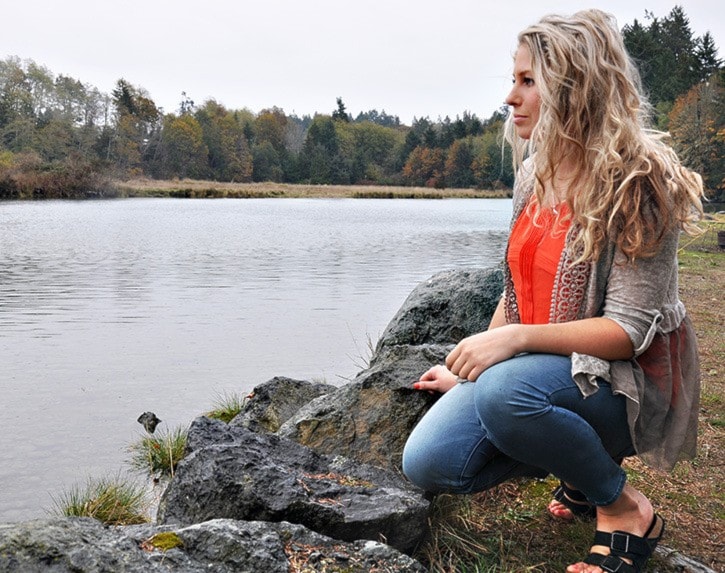Growing up around Jordan River, Jamie Constable noticed there wasn’t much life in the water, and always heard small chatter of its troubled history with copper mining.
Years later, the now-Sooke resident and a student at University of Victoria, Constable took it upon herself in her to research the Jordan River watershed for her masters with the hope her work will provide information about bringing salmon back to the desolate river.
“I think the salmon will return to the river, but it’s going to be a process ... it’s really key for the community collaborating and getting involved,” said Constable, whose mineral exploration background in northern Canada and the Arctic came in handy in taking water samples from Jordan River and studying it for the last few years.
Constable’s project will work in tandem with a proposed roundtable approach between the local community, First Nations, government and industry to clean up and breathe in new life into the river.
“I’m really trying to focus on what their goals are at this roundtable; how they are collaborating, how to harmonize with the different levels of government, who’s getting involved, how they’re using scientific information, partnerships, rules and enforcement,” she said.
No doubt, there is much work to be done.
A century ago, the Jordan River region, an area of canyons and volcanic rock, was a different ecosystem than the one it was today. Constable’s research revealed between 5,000 and 10,000 chum, pink and coho salmon spawned in the river, which was lined with flora all along its 165-kilometre bank.
At least, until a copper mine (first owned by Cowichan Copper, Sunro, and now Tek) was discovered in the early 1900s, with large scale production running from 1961 until 1974, when things changed.
In the 1960s, workers were mining an ore body beneath the river when it collapsed, allowing water into mine tunnels, causing it to shoot out the top of the mine.
No one was killed, but it took a lot of sediment and different types of material and splurged it all down this cliffside, into the river and along the river bank, Constable said, adding that following the incident, the mine remained operational until 1977, when the access tunnel collapsed, shutting down the mine permanently.
The incident continues to wound the landscape to this day, however, as copper and other unknown metals are continuing to seep into the river. En Mass salmon spawns haven’t seen in the river since the 1950s, Constable added.
“Salmon is the main indicator of the health of the watershed, because they’re no longer there since the 1950s,” she said.
How long it will take for the river to be clean again to sustain salmon again depends on the rate of cleanup, said federal Fisheries biologist Margaret Wright, whose restoration unit has been focusing on Jordan River for the last eight years.
Progress hasn’t come easy though.
“We’ve been involved in assessing the survival of salmon in the river several years ago, and found that it was fairly unsuccessful,” she said.
Still, the river isn’t dead, either.
“We know fish are in the river. There have been adults seen, there’s been juveniles seen, there’s been a study done with trout, they’re surviving; the thing we don’t know is how long, what their success of reproducing is.”
Wright’s team has also worked with B.C. Hydro to support hydrological studies near its dam operations, and what kind of restoration works are planned for the future.
One of which will be coming up next year, which is the placement of spawning gravel to help pink and chum spawning, as Hydro’s facility has an impact on the movement of gravel in the lower river.
Along with that, her team is also doing some feasibility work to look at developing an off-channel habitat for salmon.
“That would be to rebuild coho and chum salmon runs while the mine is being remediated; sort of taking the fish outside of the main stem and allowing them to rebuild in spawning and rearing in a side channel, and that can happen concurrently with the mine remediation,” Wright said.
Wright also hinted at a Jordan River roundtable, which is expected to come together sometime next year.
We’ll work with the Pacheedaht First Nation and B.C. Hydro and the community to do the restoration work that we can while this remediation is happening.
